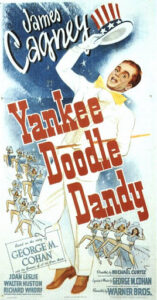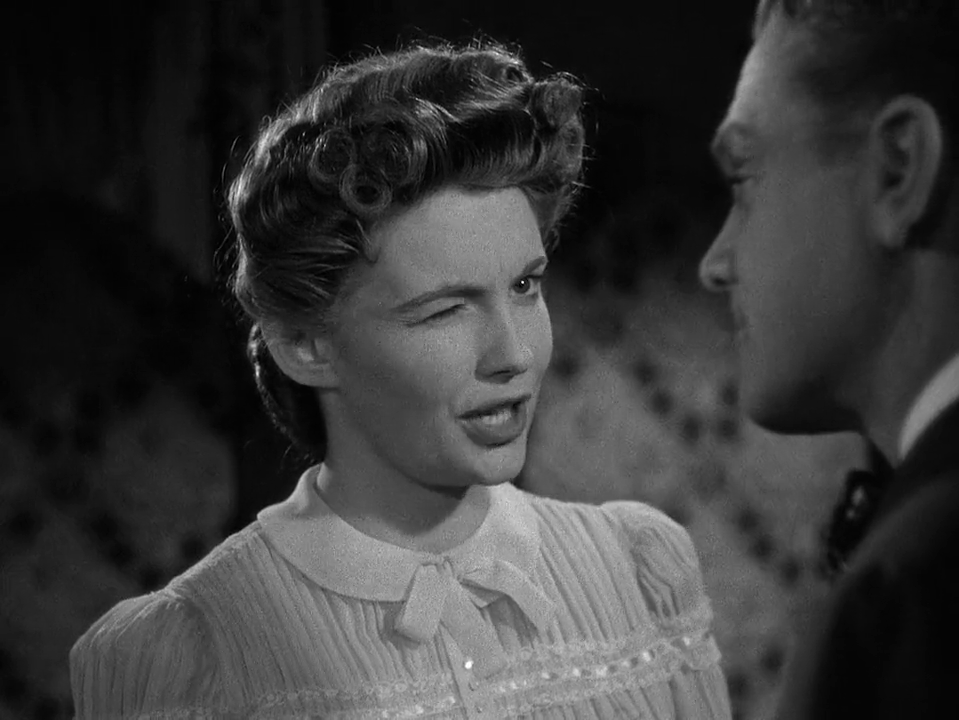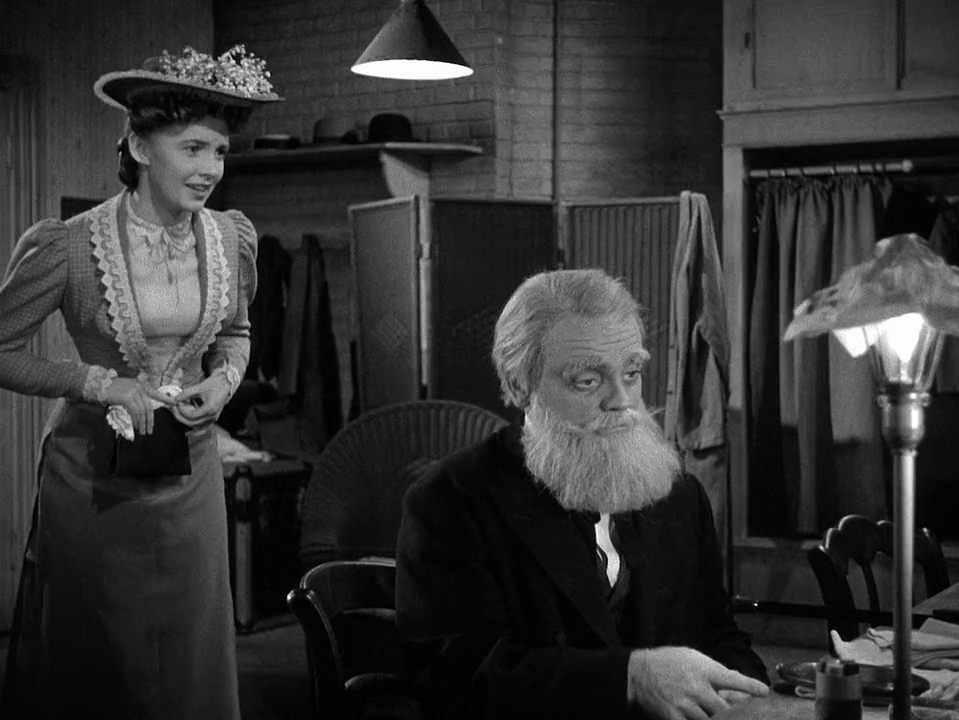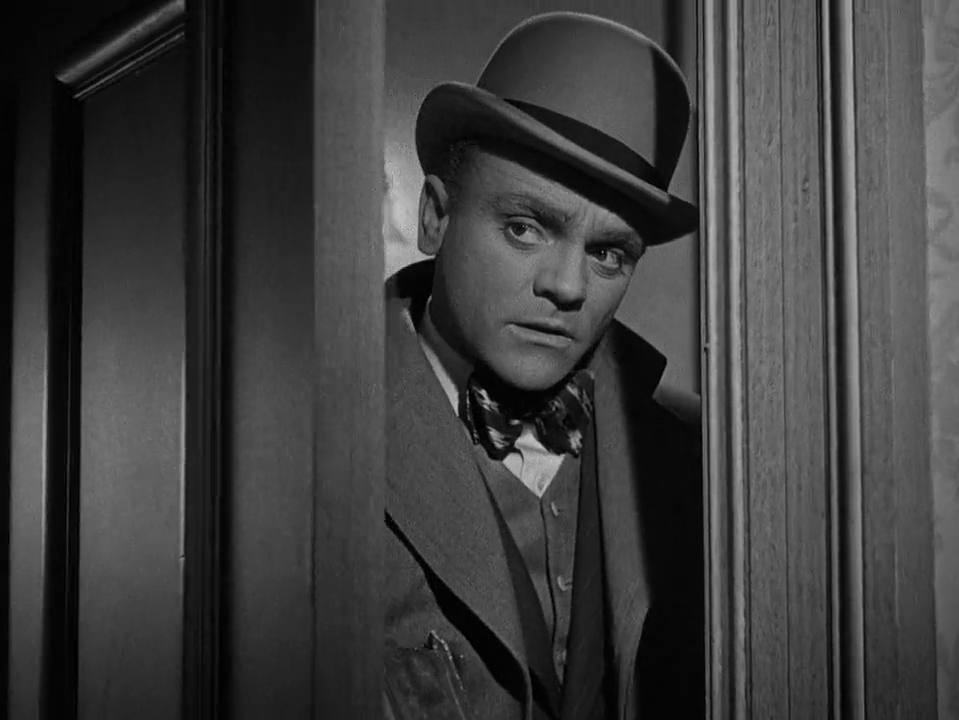Yankee Doodle Dandy (1942)
“I wouldn’t worry about this country if I were you. We’ve got this thing licked.”
|
Synopsis: |
|
Genres, Themes, Actors, and Directors:
Response to Peary’s Review: He notes that Cagney’s scenes with Joan Leslie — “extremely winning as Cohan’s girlfriend, then wife” — are “very special”: but he reminds us that “what’s even more impressive is that Cagney proves to be one of the few actors we’ve had who can comfortably play tender scenes with other men”. He adds that the “lavish production is strongly directed by Michael Curtiz”, with the “musical numbers… particularly well done in a non-Busby Berkeley style”; I didn’t realize until watching this film that Cohan was responsible for writing several enormously famous and “infectious songs”, including “Over There”, “Grand Old Flag”, “Give My Regards to Broadway”, and the title song. Peary acknowledges, however, that the “film is odd in that almost nothing bad happens to its protagonist.” Indeed, Cohan’s direct involvement in and oversight of the film’s script and production very clearly impacted the directions it goes in (or not). While Cohan allowed for his youthful self (Douglas Croft) to be authentically portrayed as brash and arrogant, he makes sure we see his loyalty, work ethic, and patriotism above all else (including his earnest attempt to enlist in the army despite being too old at 39). This may very well be authentic — indeed, Cohan was the first person in any artistic field to earn a Congressional Medal of Honor from the president — but it would have been even more interesting to see what challenges he faced other than the flop of his one attempt at “serious” drama, and the question of whether or not to return to the stage after retirement. It’s also a bit odd that no mention is made at all of Cohan’s four children — perhaps because one was with his first wife, who he divorced, and who doesn’t appear in this story. One imagines this all played a lot fresher when it was released, with Cohan’s artistic legacy much more firmly entrenched in older Americans’ minds, and his bold patriotism serving as much-needed inspiration for Americans still processing their country’s entry into the war. Meanwhile, Cagney’s performance remains as powerful as ever, and well worth watching. Peary agrees with the Academy’s designation of Cagney as Best Actor of the Year in his Alternate Oscars, where he highlights Cagney’s “inimitable” dancing style, “which mixes elastic-legged tap with fast, across-the-frame balletlike toe-walking, his legs straight, his rear out, his shoulders moving as if he were a gangster about to strike a blow, his upper torso angled forward, his head raised proudly.” Peary notes that Cagney “has some great dance moments onstage; and backstage when, disguised as an old man, he shocks Mary [Leslie] (whom he has just met) with some furious footwork: … and at the White House, when he taps down the staircase” — but he points out that perhaps most memorable of all “are those [moments] when Cagney-Cohan sincerely tells his audience, ‘My father thanks you, my mother thanks you, my sister thanks you, and I thank you.'” Redeeming Qualities and Moments: Must See? Categories
(Listed in 1001 Movies You Must See Before You Die) Links: |







One thought on “Yankee Doodle Dandy (1942)”
A once-must, chiefly for Cagney’s performance but also for its place in cinema history.
Ideally, I prefer to have a film fresh in my mind while weighing in on my thoughts – but, truth is, I simply don’t have time to rewatch every film that I have already seen.
In this case… Cagney’s performance remains fresh-enough in memory to go ahead and agree that that’s reason-enough for film fanatics to see the film. (Reading the assessment given also backs up that feeling, since it pretty much brought the film back to my mind.)
While it’s not among my favorite films, it’s certainly one to see.